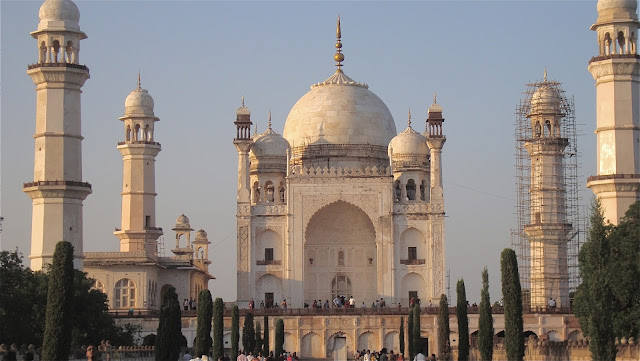The women construction workers, are part of the daily landscape, as they toil in a seemingly effortless way, carting sand, or balancing bricks on their heads, digging roads and mixing cement, as the building of India carries on inexorably forward. They are dressed in the sari or its adaptation, toe rings, bangles and bright colours. They are carted to the building site by open truck and emerge to begin work with their digging basins, which will be supported on their heads by a soft ring. At the end of the day, some can be seen walking along the road, basins aloft and tiffins (metal compartments which stack together and contain basic food for the day), in hand. (Her earnings for the day's labour, might just buy her a burger and coke).
As an interesting contrast, the Burger Restaurants are always busy - a Veggie Burger, chips and coke are a symbol of youth, affluence and modernity - a bright new culture. The food is tasty and relatively cheap, but more importantly, the whole culture of shiny decor, caps, smiles, fast food and music, is appealing - groups of young people come in to chat mostly and be seen together, often ordering one drink and multiple straws ! And recently after a charity fundraiser, the treat provided for local street children, was just this pleasure.
As an interesting contrast, the Burger Restaurants are always busy - a Veggie Burger, chips and coke are a symbol of youth, affluence and modernity - a bright new culture. The food is tasty and relatively cheap, but more importantly, the whole culture of shiny decor, caps, smiles, fast food and music, is appealing - groups of young people come in to chat mostly and be seen together, often ordering one drink and multiple straws ! And recently after a charity fundraiser, the treat provided for local street children, was just this pleasure.















